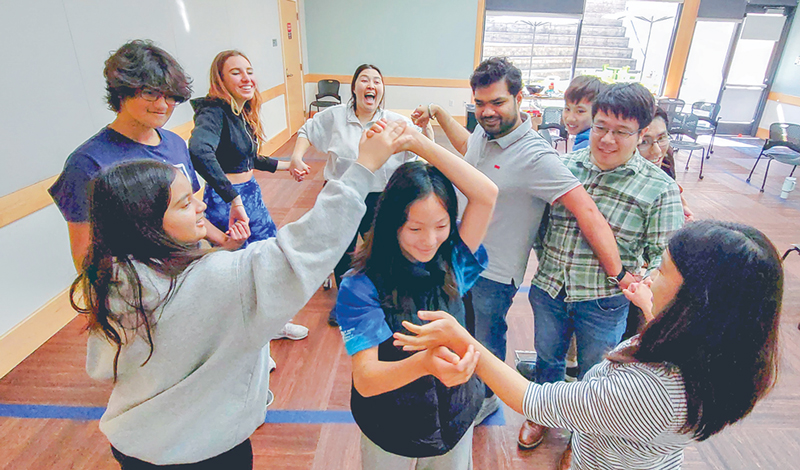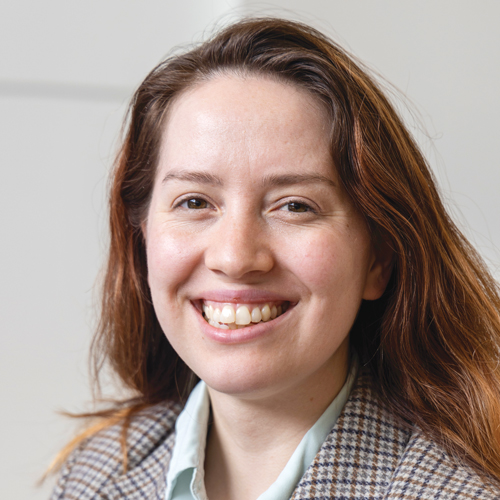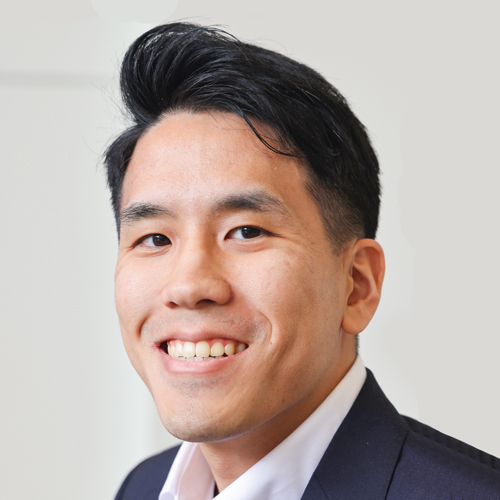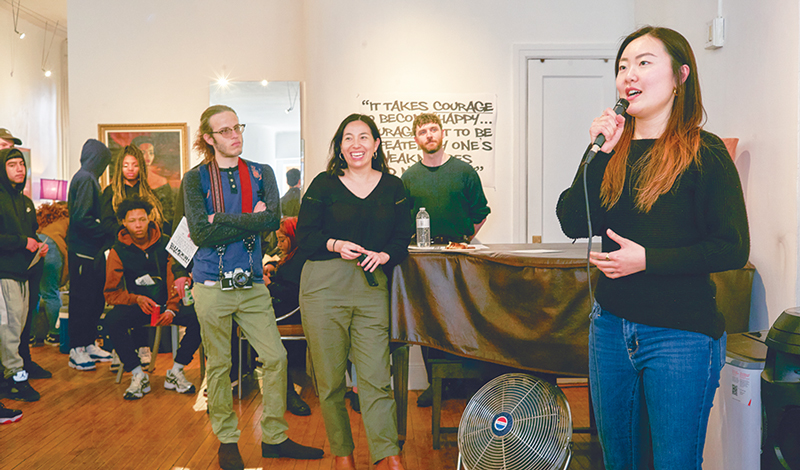When the SGI-USA youth announced last year their plan to hold chapter-led March Youth Peace Festivals, they envisioned community-based efforts to fortify friendships and counteract the fraying connections among youth.
The gatherings were that and much more. For the 11,000-plus young people who participated in the 550 chapter festivals held across the country, they were spaces to be vulnerable, speak openly, share their interests and form friendships.
The World Tribune spoke with several youth who took on the challenge of planning their gathering, the biggest part of which was meeting each youth beforehand, one-to-one. Here, they share what they learned.
I Have to Lead by Example

by Layla Manesh
Ocean Chapter, Los Angeles
There was a moment while speaking with a young woman at our festival that I recognized our similarities. Although at different stages of life, I felt that we were on the same path. I keenly sensed that I couldn’t just stand in front of her and say, “Be yourself,” when I wasn’t doing that myself. Young people see right through that. I have to lead by example—that’s one thing I took away through this experience. If I don’t do the work of becoming an example myself, the weight of responsibility falls on others, especially our future generations.
When I reflect back on what led up to the festival, I recognize that each obstacle that emerged was the right obstacle to challenge me. The more I took my Buddhist practice seriously, the more my life came out of its “stuck-ness.”
I enjoyed encouraging the younger youth and being there for them. We will change the norm of society. The old mindset doesn’t work anymore. They’re the heroes. The more they allow themselves to shine, the more their message will ripple out. As for me, my Buddhist practice is opening my eyes and teaching me to fight for what I believe in with love and compassion, rather than fear and despair. That’s my everyday challenge.
One Friend to Another

by Dominic Ditmyer
Mission Chapter, San Francisco
Four years ago, I started realizing how rare it is to find public squares—spaces in our communities that facilitate spontaneous connections between people. A quality public space allows for people to run into each other. This is super important. I find that sort of thing in the SGI.
The March Youth Peace Festivals allowed for a more personal connection; it was about everyone dialoguing and connecting. I personally invited many friends, talking to them about Buddhism for the first time. I felt, I just got to show them this practice.
We had 13 guests. They now have a memory of seeing Buddhists chanting Nam-myoho-renge-kyo in someone’s living room. To me, the idea of the March Youth Peace Festival was to show our friends the practice that we’re doing. We were explaining Buddhism as friends, not in an amphitheater of people or via a charismatic speaker.
My most basic hope is that the connections that were made that day last into the future. One friend to another—that’s how it will spread.
Peace Is Not a Myth

by Austin Berryhill
Bronzeville Hyde Park Chapter, Chicago
It was 40 degrees and windy in Chicago, but inside our Buddhist center was a warm atmosphere. We had a bunch of games and food, and allowed more space for people to naturally connect. Community is a vital part of being happy. Being able to share your own experiences with others is part of building your own peace.
It can be a challenge to meet people after college. Maintaining a friendship takes more conscious effort. I invited personal friends to the festival. While some weren’t available, my 20-year-old brother came for the first time. He got to witness that Buddhism is about connecting with others; this is what peace and happiness can look like.
For our generation, peace almost seems like a myth. But I feel it’s our duty to share that it’s very possible—it just takes having compassion for each other, listening to one another and having meaningful dialogue, not dividing ourselves.
The festival opened me up to empathize with other points of view. Everyone is unique. Some people have great ideas, but you don’t know unless you listen to them. Trying to focus on the person in front of you—it’s a powerful skill to build community.
This Is Just the Beginning

by Miai Reed
North Fulton Forsyth Chapter, Alpharetta, Ga.
I was so happy to hear that everyone enjoyed the festival. I think it’s because it was their meeting, and the heartfelt connections we formed beforehand helped create a comfortable space for everyone.
Our chapter is up to an hour north of Atlanta, depending on where you live. We started planning in December together with our districts and launched a campaign to chant Nam-myoho-renge-kyo for each participant to stand up with a mission, connect with their district and establish their own Buddhist practice.
Out of the 45 participants at our festival, two-thirds were in junior high or high school. And they were involved in each aspect of the gathering—from inviting their friends to supporting as emcees and presenting, performing in skits and a 7-piece musical ensemble and more. It was amazing to see their creativity and how they blossomed through their efforts. And all we had to encourage, really, was for them to be themselves. It reaffirmed for me that these young people already understand what this kosen-rufu movement is about.
Visiting each youth is key. I’m determined to continue fostering friendships between the youth, and for each one to awaken to their mission and never back down from their Buddhist practice. This is just the beginning.
Watch our March Youth Peace Festival Video here!

The Power of Community
The World Tribune sat down with SGI-USA youth leaders Amelia Gonzalez Tesch and Shota Okajima to talk about the recent March Youth Peace Festivals.
World Tribune: Congratulations on the success of the recent March Youth Peace Festivals! We understand over 11,000 young people participated in 550 neighborhood gatherings throughout the SGI-USA. What do you feel was key to its success?

Amelia Gonzalez Tesch: First, thank you, thank you, thank you, to all of our women’s and men’s division members for your support! Working together as a Soka family was absolutely key, and at the same time, a great benefit of this effort.
Another was the power of new youth standing up on the frontlines. New people bring new ideas. The chapters took ownership to create what they wanted to see in their communities, which also brought out tremendous creativity.
I feel the message of this effort was clear: Through supporting others and developing friendships, we strengthen our own lives. It was something through which each person could step forward as a protagonist.

Shota Okajima: It was amazing to see how unique each festival was. But one thing was consistent across the board: Efforts to connect life to life determined victory. For example, Northeast Georgia Chapter in Georgia brought out 74 youth, 53 of whom were members. Without a doubt, behind that victory were their unseen efforts to meet each person.
To add to Amelia’s point about the power of new youth, in my interactions with new members, many were eager to do home visits. Some were hesitant at first, but taking their seniors in faith along on these visits gave them the confidence that they have the power to make heartfelt connections. I feel it was this togetherness—moving, meeting, planning and celebrating together—that was the source of new power.
WT: Naturally, the question now is how to build on this victory.
Shota: It is a tremendous victory that SGI-USA gathered over 11,000 young people. This effort showed us the reality of each chapter. Because we know where we are, we can create a vision of where we want to go.
We saw friendships deepen in each chapter, not just between leaders and members, but among the members, too. Many also realized personal breakthroughs. Solidifying our connections with each person and helping them strengthen their Buddhist practice is key.
Amelia: What helps is having a goal we’re working toward. One, for example, is our goal to strengthen and expand our youth, gathering 100,000 youth in 2028 to commemorate Ikeda Sensei’s 100th birthday. With that target, we can take an honest look at our reality and identify what we can do.
True and lasting growth won’t come overnight—it does require persistent and repeated efforts. I think this is the same with building trust and supporting one youth to awaken to their mission. That being said, I feel returning to our vow is the way we can build on this victory. When I chant based on a vow, do activities with a sense of mission and move together with others, that’s when everything becomes joyful, and I can continue to strive in this effort.
Toward that end, morning daimoku is critical. When I have an awareness of my mission, I get so much energy. And it allows me to enjoy all aspects of my life.
WT: What, then, does it mean to solidify the foundation?
Shota: Maybe I can speak on this from the perspective of our community. Of course, in the coming months, we have our April Introductory Exam, May Commemorative Contribution activity and so on. But I think it comes back to two ongoing points of focus.
First is the district. These festivals really fostered a sense of community, but that sense of community is found in our districts and at our monthly discussion meetings. It’s difficult for one person to care for dozens of people, but a district family can care for each youth.
Second is fostering youth. The challenge is not a lack of youth, it’s whether we’re fostering young people to be masters of friendship and dialogue, people who embody the spirit to care for others.
Both are ultimately about caring for each person. Brick by brick, that’s how we can solidify our foundation.
Amelia: By meeting with others at their homes, we can build friendship and trust, and we can truly understand the reality of their lives. Emails, texts and administrative tasks have their place and value. But my personal determination is to make sure that visiting others becomes an integral part of my daily practice.
Even if only a few youth attended a festival, that’s fine. Caring for one person will open the way forward; it comes down to us. On the flipside, like Shota mentioned, if many youth attended the festival, it’s not sustainable for one person to care for all of them. That’s why unity in each district is important to building on our victory. Plus, working together always re-energizes us and makes the effort along the way fulfilling.
WT: What is at the heart of your vision moving forward?
Amelia: Sensei said that the years leading up to 2030 would decide the fate of humanity. I think we can all agree that we have to transform the state of society. We have to share Buddhism so that people can truly learn to treasure their lives and the lives of others. In this shared struggle with Sensei, losing is not an option.
Shota: In the wake of Sensei’s passing, each of these festivals were a statement from the SGI-USA youth division declaring: We will carry on our mentor’s movement with unity centered on the oneness of mentor and disciple. We will show Sensei’s greatness through us—the disciples—achieving victory. We are now building on this momentum toward 2030!
April 5, 2024, World Tribune, pp. 6–9
You are reading {{ meterCount }} of {{ meterMax }} free premium articles

